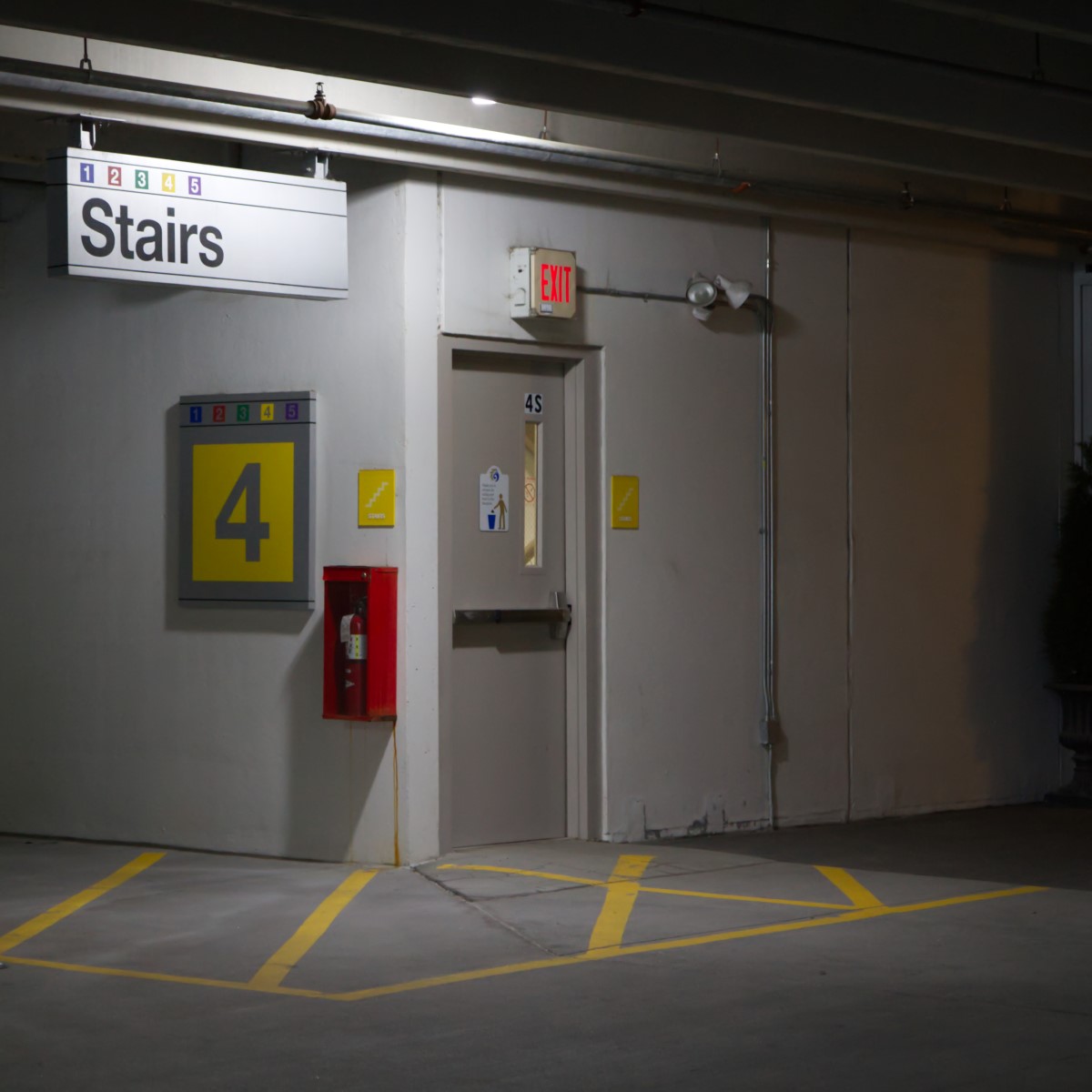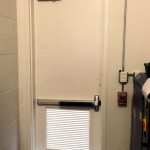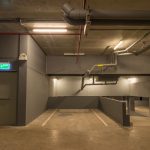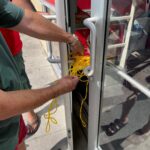 Today’s Quick Question has come up many times, in reference to various types of buildings and spaces:
Today’s Quick Question has come up many times, in reference to various types of buildings and spaces:
On a multi-level parking garage with a capacity of 600 cars, do the stair doors and exit discharge doors require panic hardware?
Compared to other code requirements related to doors, those that apply to panic hardware are very clear and have been quite stable over the past 20 years. Panic hardware is required by the model codes for egress doors equipped with a lock or latch, serving the following locations:
- International Building Code (IBC) and International Fire Code (IFC)
- Assembly or educational occupancies with a calculated occupant load of 50 people or more
- High hazard occupancies (any occupant load)
- NFPA 101 – Life Safety Code
- Assembly, educational, or day care occupancies with a calculated occupant load of 100 people or more
- Areas of high hazard contents with a calculated occupant load in excess of 5
So the answer to this question, whether we’re talking about a parking garage, apartment building, office building, etc., is based on the use group or occupancy classification. Is a parking garage an assembly, educational, day care, or high hazard occupancy? Typically, the answer is no – a parking garage is usually a storage occupancy.
If the building or space in question IS one of the use groups or occupancy classifications that require panic hardware, we would then need to check the calculated occupant load (50+ for the I-Codes, 100+ for the NFPA codes). But panic hardware would not be required by the model codes for a storage occupancy regardless of the number of occupants. If the egress plan shows an assembly occupancy exiting through a parking garage (not common), panic hardware might be required for doors serving the assembly occupancy.
With all of that said, there are good reasons to specify/install panic hardware even where it is not required by code. Panic hardware – especially a rim panic – is durable, reliable, secure, and easy to use, even when your hands are full. Most panic hardware can easily support access control features, which have become very common in all building types. So it’s a great choice for a parking garage, but no – it is not required by the model codes for storage occupancies.
~~~
Note that a parking garage might contain an electric room that is required by the National Electrical Code to have panic hardware. In this case, the panic hardware would be required for doors within 25 feet of the required working area around the electrical equipment, but would not be required for all of the doors between the electrical room and the public way. Refer to this Decoded article for more info.
You need to login or register to bookmark/favorite this content.









During an emergency, stairwells can quickly become very concentrated occupancies. Why don’t the codes have any requirements for panic hardware at exit discharge doors relative to the occupant load of the building?
In an office building under the ICC, I normally assume that a future tenant might have a meeting room with 50+ occupants, and panic hardware is specified at the stair discharge doors. The future tenant then pays the cost for the upgrade to panic hardware at the doors exiting into the stairwell on that tenant’s floor. Developers usually do not want to pay the added cost of providing panic hardware on all the doors exiting into the stairwells, particularly with a highrise building with stair vestibules and fail-safe locking for re-entry to the floors.
However, a highrise apartment building with 2 stairs and 400 occupants under the ICC can legally have lever hardware on the stair discharge doors if the building lacks any amenity spaces with an assembly or education occupancy of 50+, whereas a single meeting room or classroom elsewhere with only 50 occupants requires panic hardware.
I normally specify panic hardware when stairwell doors are discharging 50+ occupants. This has never come up as an owner VE consideration, and it’s far less costly than the owner, architect, consultant, contractor, and manufacturer having to pay attorney fees to demonstrate no wrongdoing if there is ever a death or injury lawsuit.
Hi Rex –
Like I said, there are other good reasons to use panic hardware, even when it is not required by code. I think Mark Kuhn agrees with you too! 🙂
https://idighardware.com/2023/06/yes-i-overspecify-panic-hardware-but-let-me-tell-you-why/
– Lori
Just be careful if you have an open parking garage and you need to meet any type of windstorm requirement. There is only one manufacturer that I know of that has any windload testing for panic devices that are inswinging. If it needs to meet impact as well, then I dont think that is available.
Great point! Thanks Emilio!
– Lori